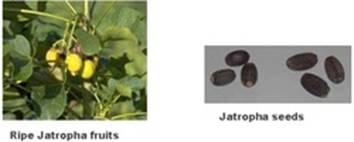Clinical profile of Jatropha Curcas poisoning in children
Abstract
Introduction: Jatropha curcas (Physic nut; Hindi – Ratanjot, Bagranda, Jungle Erandi) is a common plant found all over the world. Accidental poisoning is common in children. This study aimed to describe the clinical profile and outcome of children admitted for acute Jatropha poisoning at a tertiary care teaching hospital from 2004 -2013.
Materials and methods: This is a 10 year retrospective descriptive study. Hospital charts of children (ages 1 year to 18 years or less) admitted in the pediatric unit from Jan 2004 to Dec 2013 was reviewed. Total of 169 cases of Jatropha curcas poisoning were reported. Clinical profile and outcome were described. Mean, summation, percentage and frequency distribution were used where applicable.
Results: Total 169 cases were evaluated. Acute Jatropha poisoning was the commonest cause of poisoning in children constituting 31% of poisoning cases. Vomiting was the most common symptom present in all children followed by abdominal pain (58%), weakness (21%), dehydration (13%) and diarrhea (11%).Hypovolemia shock was documented in 6 children with acute Jatropha poisoning. All children required IV fluids, IV anti emetics and ORS. 4 % cases required IV fluid resuscitation & oxygen supplementation due to hypovolemia shock.
Conclusion: Most children who ingest Jatropha curcas seeds develop mild gastrointestinal symptoms but life threatening complications like hypovolemia shock can occur. Health care providers must recognize, assess and initiate appropriate management promptly to minimize the serious consequences that could endanger the lives of the patients.
Downloads
References
2. Levin Y, Sherer Y, Bibi H, Schlesinger M, Hay E. Rare Jatropha multifida intoxication in two children. J Emerg Med 2000 Aug; 19(2):173-175. [PubMed]
3. Perri LM. Medicinal Plants of East and South East Asia. Cambridge London: MIT press; 1980; p. 246-247.
4. Abdu-Aguye I, Sannusi A, Alafiya-Tayo RA, Bhusnurmath SR. Acute toxicity studies with Jatropha curcas L. Hum Toxicol 1986 Jul;5(4):269-274. [PubMed]
5. Kulkarni ML, Sreekar H, Keshavamurthy KS, Shenoy N. Jatropha curcas poisoning. The Indian J Pediatr 2005 Jan; 72(1): 75-76. [PubMed]
6. Joubert PH, Brown JM, Hay IT, Sebata PD. Acute poisoning with Jatropha curcas (purging nut tree) in children. S Afr Med J 1984 May; 65 (18): 729-730. [PubMed]
7. Watt JM, Breyer-Brandwijk MG. The medicinal and poisonous plants of southern and eastern Africa. 2nd ed. Edinburgh, London: E. &S. Livingstone Ltd; 1962.
8. Berchmans HJ, Hirata S. Biodiesel production from crude Jatropha curcas L. seed oil with a high content of free fatty acids. Bioresour Technol 2008 Apr; 99 (6): 1716-1721. [PubMed]
9. Patil PD, Deng S. Optimization of biodiesel production from edible and non-edible vegetable oils. Fuel 2009 Jul; 88(7): 1302-1306.
10. Stirpe F, Pession-Brizzi A, Lorenzoni E, Strocchi P, Montanaro L, Sperti S. Studies on the proteins from the seeds of Croton tiglium and of Jatropha curcas. Toxic properties and inhibition of protein synthesis in vitro. Biochem J 1976 Jan; 156 (1): 1-6.
11. Rug M, Ruppel A. Toxic activities of the plant Jatropha curcas against intermediate snail hosts and larvae of schistosomes. Trop Med Int Health 2000 Jun; 5 (6): 423-430. [PubMed]
12. Pamidimarri DVNS, Singh S, Mastan SG, Patel J, Reddy MP. Molecular characteriza¬tion and identification of markers for toxic and non-toxic varieties of Jatropha curcas L. using RAPD, AFLP and SSR markers. Mol Biol Rep 2009 Jul; 36 (6): 1357-1364. [PubMed]
13. Menezes RG, Rao NG, Karanth SS, Kamath A, Manipady S, Pillay VV. Jatropha curcas poisoning. Indian J Pediatr 2006 Jul; 73(7): 634. [PubMed]
14. Rai DK, Lakhanpal P. Jatropha curcas poisoning in pediatric patients, Mauritius. Internet J Pediatr Neonatal 2008 Mar; 8 (2): 1-6.
15. Kohli U, Kuttiat VS, Lodha R, Kabra SK. Profile of Childhood Poisoning at a Tertiary Care Centre in North India. Indian J Pediatr 2008 Jun; 75 (8): 791-794. [PubMed]
16. Gupta SK, Peshin SS, Srivastava A, Kaleekal T. A study of childhood poisoning at National poisons information centre, AIIMS, New Delhi.J Occup Health 2003 May; 45(3): 191-196. [PubMed]
17. Koltin D, Uziel Y, Schneidermann D, Kotzki S, Wolach B, Fainmesser P. A case of Jatropha multifida poisoning resembling organophosphate intoxication. Clin Toxicol (Phila). 2006 Mar; 44(3):337-338. [PubMed]
18. Adam SE, Magzoub M. Toxicity of Jatropha curcas for goats. Toxicology 1975 Jul; 4(3): 347-354. [PubMed]
19. Lall SB. Accidental pediatric poisoning - a preventable medical emergency (Editorial). Indian J Pediatr 1998 May- Jun; 65(3): 365-3703.



 OAI - Open Archives Initiative
OAI - Open Archives Initiative


